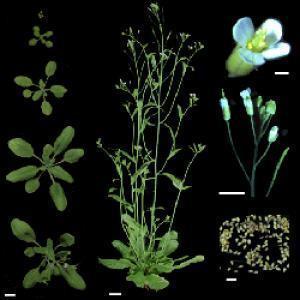Stem cell function in normal cells of plants
Conventional cells are capable of replacing lost organs in plants - a function that is thought to be unique to stem cells - researchers at the New University's Center for Genome and Biological Systems. York and Utrecht University in the Netherlands have discovered. These findings, showing that some stem cell roles in organ regeneration can be shared by other cell types, are published in the latest issue of the journal Nature.
Stem cells have two basic properties: they can renew themselves and they can replicate other types of specialized cells. These features turn them into renewable cells, creating new cells to replace lost organs and tissues. These phenomena are very clear in plants, they can regrow their branches and roots themselves. The center of cell activity is the stem cell cavity, where stem cells are directed to perform these regeneration and renewal functions.
However, it is unclear how important the stem cell cavity is for organogenesis - the construction and reconstruction of organs.
Scientists study Arabidopsis thaliana. This plant is a good candidate for research because previous researchers have been aware of all the genes expressed in a single cell of its own, allowing it to monitor cell identity as they recover. .
 Arabidopsis thaliana: Fruit, vegetative stage, before flowering and growing flower body. Center: a mature tree with full set of flowers / seeds. Right: Flowers, flower stems and seeds. (Photo: INRA 2003 / New York University).
Arabidopsis thaliana: Fruit, vegetative stage, before flowering and growing flower body. Center: a mature tree with full set of flowers / seeds. Right: Flowers, flower stems and seeds. (Photo: INRA 2003 / New York University).
In the study, the researchers removed the root tip of the root, thereby removing the stem cell cavity, then examining the cell identity by measuring all gene activity. The results showed that stem cells returned quite late when regenerated after other cells were replaced. The researchers then used mutant plants whose stem cell niche did not work to confirm their observations.Despite the absence of the stem cell cavity, the plant's normal cells are still active to regenerate all major tissues that form the root tip - the process that begins a few hours after the root is removed.
However, the researchers found that plants without active stem cell cavities cannot reproduce normal growth, suggesting that other cells do not replace all stem cell functions.
Recent scientists have said that forcing non-stem cells in mammals to express some genes can convert these cells into stem cells - a process known by the name ' reprogramming '. In 2008, a Nature rescuer at the Harvard Stem Cell Institute recreated the pancreas cells in mice into a type of cell that makes insulin without the help of stem cells. In NYU-Utrecht's study, the researchers sought to determine whether the entire organ regeneration in plants had no stem cells.
Kenneth Birnbaum, a professor of biology at NYU, his lab conducted the study, said: 'You can think of these findings as a reprogramming of the organ without the need for a cell cavity. origin. This is the case where organisms can perform this reprogramming naturally. That's probably why plants are so good at reproducing their body parts. '
The research was funded by the National Institutes of Health.
- It was possible to transplant stem cells from one person to another
- What are stem cells? How advanced is medicine in this area?
- 10 ways stem cells promote medical development
- Stem cells will be taken to the ISS station for observation
- LEARN ABOUT ORIGINAL CELL (Part 5)
- Simple change turns cells into embryonic stem cells
- The first stem cell transplant performed successfully
- Awakening 'dormant' cells helps the brain heal itself
- Detecting 'multipurpose' stem cells helps cure many diseases
- Mexico focuses on promoting the creation of stem cell banks
- It is easy to isolate stem cells in the urine
- Stem cells are transplanted on pigs successfully
 Why do potatoes have eyes?
Why do potatoes have eyes? 'Tragedy' the world's largest carnivorous life: Death becomes ... public toilet
'Tragedy' the world's largest carnivorous life: Death becomes ... public toilet Tomatoes were once considered 'poisonous' for 200 years
Tomatoes were once considered 'poisonous' for 200 years Detecting microscopic parasites on human face
Detecting microscopic parasites on human face